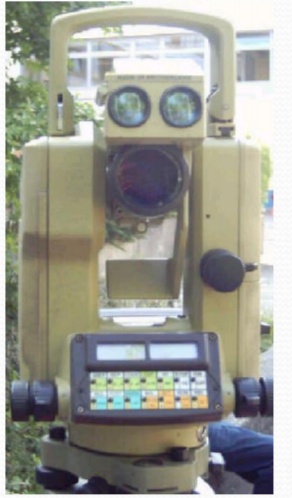Different Types Of Levelling Instruments
Bubble
When bubble is centred the instrument’s standing axis is approximately vertical. The compensators in the instrument take over and adjust the optical Line of Collimation so that it is horizontal (hopefully)
Definition
Line of Collimation – Imaginary line that passes through leveling instrument at Cross Hairs
Different Types Of Levelling Instruments:
Line level
is a level designed to hang on a builders string line. The body of the level incorporates small hooks to allow it to attach and hang from the string line. The body is lightweight, so as not to weigh down the string line, it is also small in size as the string line in effect becomes the body; when the level is hung in the centre of the string, each leg of the string line extends the levels plane
Water Level
The tube is filled with water so that the water level is about 3 ft high in each of the tube ends. It is essential that no air bubbles be trapped in the tube. Air bubbles can be removed by tapping the tube with the finger.
Dumpy Level
It is simple compact and stable. The telescope is rigidly fixed to its support therefore cannot be rotated about its longitudinal axis. A long bubble tube is attached to the top of telescope. Dumpy literally means short and thick.
Builders Level
A builders level is an optical instrument used to establish or check points in the same horizontal plane. It is used in surveying and building to transfer, measure, or set horizontal levels
Tilting (Transit) level
It consists of a telescope attached with a level tube which can be tilted within few degrees in vertical plane by a tilting screw.
Very Accurate
Very Difficult to Set Up
Can also set grades
Works similar to a plumbers pipe level
Have been replaced by Total Stations
Automatic Level
The Automatic Level is an easy to use surveying Instrument
Instrument needs only to be setup level within its circular level bubble
Has a damping compensator which adjsuts line of colimation
Generally accurate to +/- 2mm
Automatic Level parts:
1.Base Plate
2.Horizontal Circle
3.Eyepiece
4.Circular Bubble
5.Sighting Pointer
6.Objective Lens
7.Focusing Knob
8.Fine Motion Drive
9.Footscrew
10.Bubble Mirror
Laser Level
Has a compensator similar to Automatic Level
Radiates a Laser Beam 360 through line of collimation
Laser is then picked by a receiver to indicate line of collimation
Some lasers are self leveling
Survey quality laser levels are designed with two features:
Visible or non-visible
Rotating or non-rotating
Total Station
A total station is an electronic transit and an EDM combined into one instrument.
Add in a microprocessor, laser plummet and other options and you have the instrument of choice for ground based surveying.
Some may require a prism, but others are reflectorless.
Errors particular to Lasers:
Reflections from other glass objects ie car windscreens
Rotating Beacons
Lasers being used at other sites, typically lasers have range of 900ft.

















0 Comments